Bees and wasps are integral to ecosystems, playing essential roles in pollination and pest control. However, not everyone welcomes these buzzing insects into their gardens or outdoor spaces.
For home gardeners, individuals allergic to bee stings, or anyone looking to maintain a serene outdoor area, Bee Repelling Plants offer a natural solution to keep these insects at bay without sacrificing greenery and beauty.
This blog will explore a variety of Bee Repelling Plants known for their natural deterrent qualities. From aromatic herbs to vibrant flowers with insect-repelling properties, these plants can help create a more comfortable outdoor space.
You’ll also learn how to incorporate them effectively into your garden while maintaining a lush and inviting environment.
Why Choose Plants That Repel Bees and Wasps?
For many, bees and wasps are an unwelcome outdoor distraction, especially in spaces where relaxation and comfort are a priority. Fortunately, incorporating Bee Repelling Plants into your garden provides a natural, eco-friendly solution to deter these insects without harming the environment.
Here’s why you might consider planting flora that discourages bees and wasps:
1. Bee or Wasp Allergies: Individuals with severe allergies to bee or wasp stings can significantly reduce their risk of dangerous encounters by using Bee Repelling Plants. Instead of relying on chemical sprays or traps, planting natural deterrents helps create a safer outdoor environment while maintaining a lush and vibrant garden.
2. Outdoor Comfort & Enjoyment: Nothing disrupts a peaceful afternoon like uninvited buzzing guests. Whether you’re hosting barbecues, enjoying family gatherings, or simply relaxing in your backyard, incorporating Bee Repelling Plants can help keep these insects at bay.
Strategically placing these plants around patios, seating areas, and walkways ensures a more enjoyable, sting-free experience.
3. Eco-Friendly Alternative to Pesticides: Using Bee Repelling Plants is a natural and non-toxic way to keep bees and wasps away without resorting to harmful chemical pesticides. This approach supports environmental sustainability while preserving beneficial insects that contribute to pollination in other parts of your garden.
4. Pet and Child Safety: Chemical sprays and insecticides can pose risks to pets and young children who play in outdoor areas. Opting for Bee Repelling Plants provides a safe and natural method to deter unwanted insects while keeping your garden a toxin-free zone.
5. Low Maintenance & Multi-Purpose Benefits: Many Bee Repelling Plants are not only effective at deterring insects but also serve multiple functions. Some, like basil and mint, double as culinary herbs, while others, such as citronella and eucalyptus, offer additional insect-repelling benefits against mosquitoes.
These plants are often low maintenance, making them a practical and aesthetic addition to any garden.
6. Preserving Pollinator Balance: While the goal is to reduce bee and wasp activity in specific areas, using Bee Repelling Plants doesn’t mean eliminating pollinators entirely. By carefully selecting plant placement, you can still support pollination in designated garden spaces while keeping high-traffic areas free from unwanted buzzing visitors.
By strategically selecting and planting Bee Repelling Plants, you can create a safer, more comfortable outdoor space without disrupting the natural balance of your garden. Whether you’re looking for allergy protection, increased outdoor comfort, or an eco-friendly alternative to pesticides, these plants provide a natural and effective solution
How Plants Naturally Repel Bees and Wasps?
Certain plants deter bees and wasps through their scents, oils, or textures, making them excellent choices for those looking to create a more comfortable outdoor environment. By understanding how Bee Repelling Plants work, you can strategically incorporate them into your garden to minimize unwanted buzzing visitors.
1. Aromatic Scents: Many Bee Repelling Plants emit strong or distinctive aromas that bees and wasps find unappealing. Plants such as citronella, eucalyptus, and wormwood release scents that overwhelm their sensitive olfactory senses, discouraging them from hovering or landing nearby.
These natural fragrances help create an invisible barrier around patios, doorways, and garden paths.
2. Essential Oils as Natural Repellents: Some plants produce potent essential oils that naturally repel insects. Herbs like mint, basil, and rosemary contain oils that act as deterrents, making them excellent additions to outdoor dining areas or potted arrangements near seating spaces.
These plants not only serve as Bee Repelling Plants but also offer culinary and medicinal benefits.
3. Visual and Textural Characteristics: Bees and wasps rely on both sight and touch when selecting flowers and nesting spots. Many Bee Repelling Plants have visual or textural characteristics that make them less attractive:
- Fuzzy or hairy leaves: Plants like lamb’s ear have a texture that bees and wasps find unappealing.
- Dark or red flowers: Bees are more attracted to blue, yellow, and white flowers, so opting for plants with red blooms, such as geraniums, can reduce their presence.
- Lack of nectar or pollen: Some plants provide little to no food source for pollinators, making them naturally uninviting.
With this knowledge, you can select Bee Repelling Plants that align with your gardening needs. Whether you’re looking to protect a patio, reduce wasp activity near your home, or create a more enjoyable outdoor space, these plants provide a natural, eco-friendly solution.
By integrating these natural deterrents into your landscaping, you can enjoy a beautiful and functional garden without the constant presence of bees and wasps
Top Plants That Repel Bees and Wasps
1. Mint (Mentha spp.)

Mint is a popular herb known for its sharp, refreshing aroma, which makes it an excellent choice among Bee Repelling Plants. While humans love its invigorating scent, bees and wasps find it overwhelming, making mint an effective natural deterrent.
Why It Works:
- The strong scent of mint disrupts the olfactory receptors of bees and wasps, making them less likely to linger around areas where the plant is present. Its natural essential oils act as an irritant, discouraging these insects from landing nearby.
How to Use It:
- Plant in Containers: Mint spreads aggressively, so growing it in pots or containers helps control its rapid growth.
- Strategic Placement: Position mint near patios, entryways, and seating areas to naturally repel bees and wasps.
- Garden Borders: Use mint as a border plant in gardens where you want to minimize bee and wasp activity.
Additional Benefits:
- Thrives in both indoor and outdoor gardens.
- Acts as a multipurpose herb for teas, cooking, and cocktails.
- Provides a fresh, pleasant fragrance that enhances any garden space.
By incorporating mint into your garden, you not only add a practical, culinary herb but also benefit from one of nature’s best Bee Repelling Plants for a more comfortable outdoor environment.
2. Eucalyptus (Eucalyptus spp.)
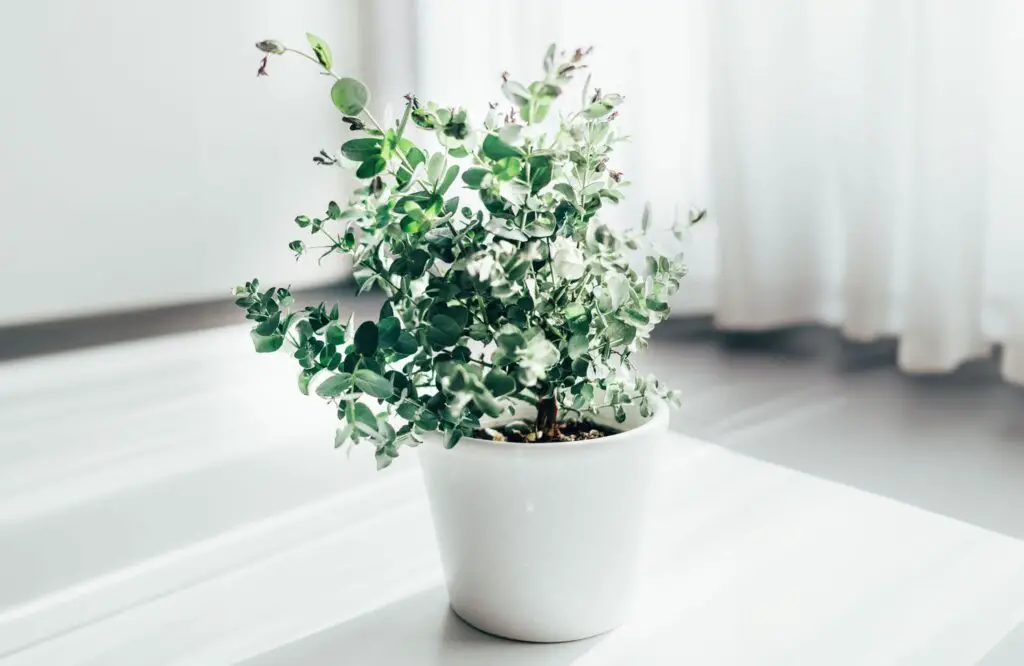
Eucalyptus is a powerful natural deterrent among Bee Repelling Plants, thanks to its potent, camphorous scent. While admired for its refreshing fragrance and ornamental beauty, bees and wasps find its aroma unappealing, making it an excellent addition to gardens where you want to minimize insect activity.
Why It Works:
- The essential oils produced by eucalyptus release a strong, menthol-like aroma that interferes with the scent receptors of bees and wasps. This naturally discourages them from settling in areas where the plant is present.
How to Use It:
- Ornamental Planting: Grow eucalyptus as a decorative tree or shrub in outdoor gardens.
- Potted Growth: Plant eucalyptus in large pots for patio and balcony protection.
- Dried Leaves Indoors: Place dried eucalyptus leaves inside your home for additional air-purifying benefits while keeping insects at bay.
Additional Benefits:
- Eucalyptus leaves can be used for air freshening and natural pest control.
- Known for its therapeutic properties, it’s widely used in aromatherapy and wellness practices.
- Adds a striking, elegant aesthetic to gardens and landscapes.
By incorporating eucalyptus into your outdoor space, you gain both a functional and visually appealing solution while utilizing one of the most effective Bee Repelling Plants to keep buzzing insects away.
3. Citronella (Cymbopogon nardus)
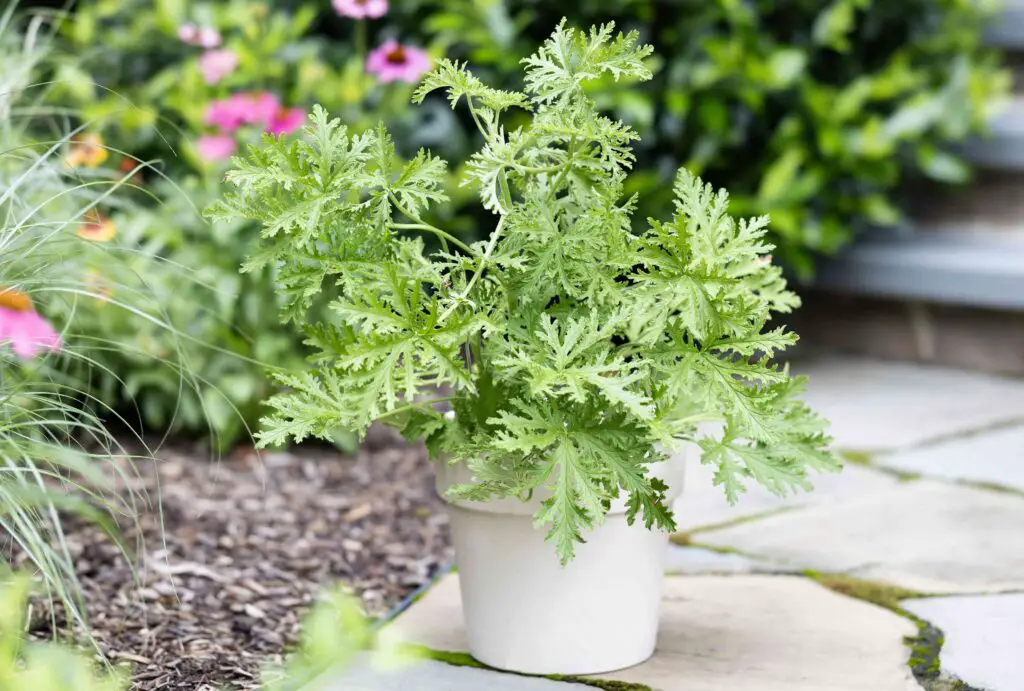
Commonly known as the “mosquito plant,” citronella is also one of the most effective Bee Repelling Plants, making it a great choice for those looking to keep outdoor spaces free from unwanted buzzing guests. Its strong citrusy aroma naturally deters bees, wasps, and other insects.
Why It Works:
- Citronella contains compounds like citronellol and geraniol, which interfere with the scent receptors of bees and wasps. This confusion makes them less likely to linger in areas where the plant is present, providing a natural barrier against insect activity.
How to Use It:
- Border Planting: Grow citronella along walkways, patios, and garden borders to create a protective barrier.
- Potted Protection: Keep potted citronella plants on balconies, decks, and near seating areas for added insect deterrence.
- Companion Planting: Pair citronella with other Bee Repelling Plants like mint and eucalyptus for maximum effect.
Additional Benefits:
- Citronella oil is widely used in insect-repellent candles, sprays, and lotions.
- The plant has a refreshing fragrance, making outdoor spaces more pleasant.
- Low-maintenance and drought-tolerant, ideal for warm climates.
By incorporating citronella into your garden or patio, you can enjoy a more comfortable, sting-free environment while utilizing one of nature’s most well-known Bee Repelling Plants.
Related Topics:
4. Marigolds (Tagetes spp.)
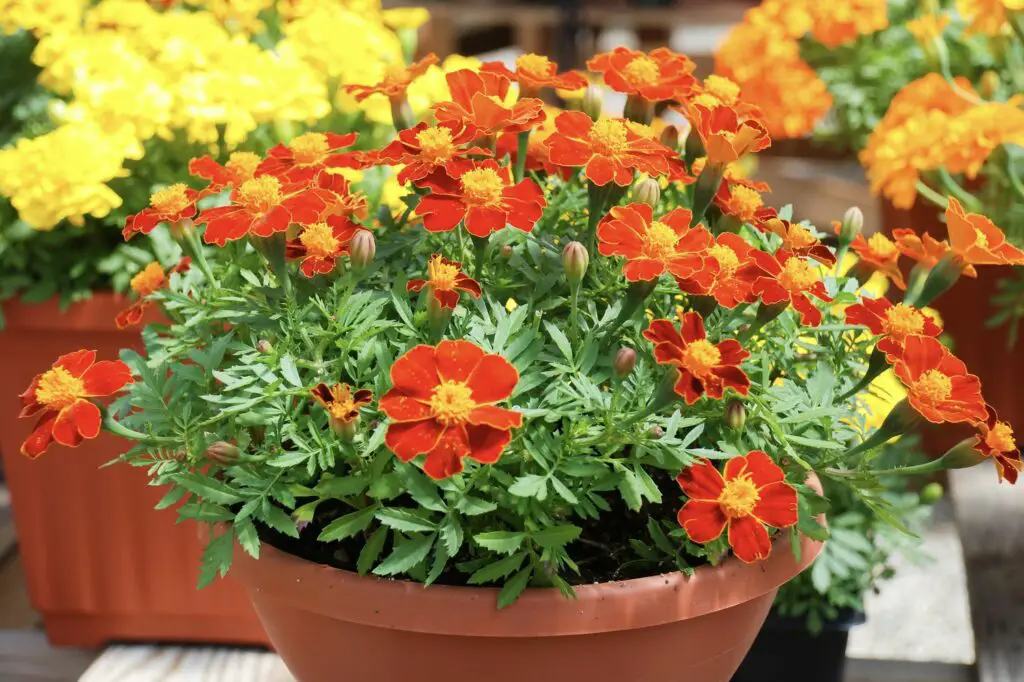
Marigolds are not only beautiful and vibrant but also one of the most effective Bee Repelling Plants for gardens. Their bright blooms provide a decorative touch while naturally deterring bees, wasps, and other unwanted pests.
Why It Works:
- Marigolds release a strong, pungent scent that many insects, including bees and wasps, find unappealing. The natural compounds in their foliage act as a deterrent, making these flowers a perfect addition to outdoor spaces where you want to minimize insect activity.
How to Use It:
- Garden Borders: Plant marigolds along pathways, fences, or flower beds to create a natural repellent barrier.
- Windowsills & Entryways: Position marigolds near windows, doors, and patios to discourage bees and wasps from coming inside.
- Companion Planting: Grow marigolds alongside vegetables and herbs to repel pests while enhancing your garden’s aesthetic.
Additional Benefits:
- Marigolds are known for deterring other garden pests like mosquitoes, aphids, and nematodes.
- They are easy to grow and thrive in a variety of conditions.
- Their bright blooms attract beneficial insects like ladybugs, which help control other pests.
By incorporating marigolds into your outdoor space, you can enjoy a colorful and practical solution while taking advantage of one of the best Bee Repelling Plants available.
5. Wormwood (Artemisia spp.)
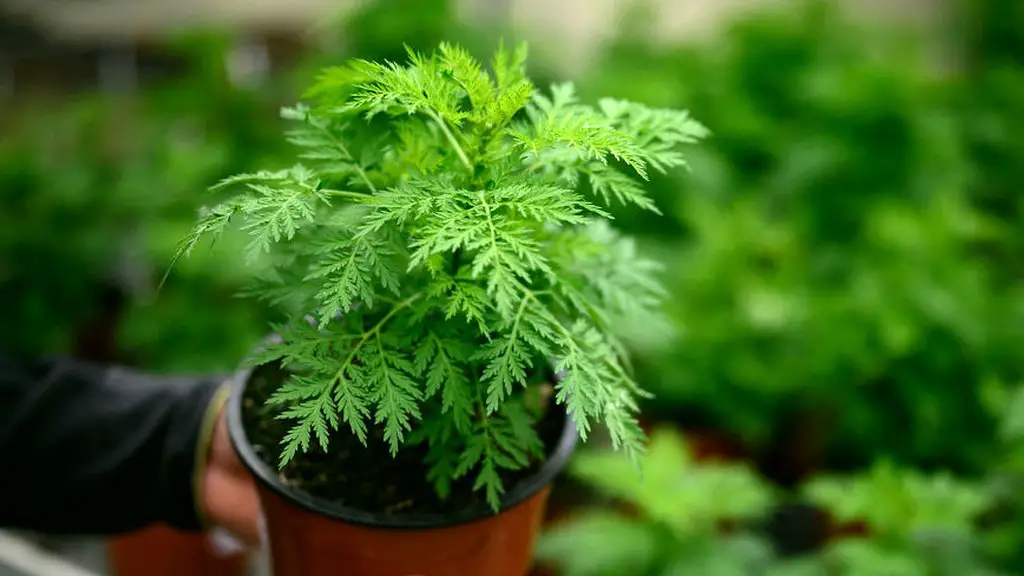
Wormwood is a hardy, aromatic herb that doubles as an effective Bee Repelling Plant. Its silvery-green foliage adds a unique aesthetic to gardens while naturally keeping bees, wasps, and other pests at bay.
Why It Works:
- Wormwood contains bitter compounds and powerful essential oils that make it unappealing to bees and wasps. The strong, bitter scent acts as a natural deterrent, discouraging these insects from lingering near the plant.
How to Use It:
- Garden Borders: Plant wormwood along the edges of your garden or near patios to create a natural insect-repelling barrier.
- Low Hedging: Use wormwood as a decorative yet functional low hedge to protect high-traffic outdoor areas.
- Drought-Tolerant Landscaping: Since wormwood requires minimal watering, it’s an excellent choice for xeriscaping or low-maintenance gardens.
Additional Benefits:
- Wormwood also repels other pests, including moths and flies, making it useful indoors.
- It thrives in full sun and well-drained soil, requiring little upkeep.
- Some species of wormwood are used in herbal remedies and traditional medicine.
By adding wormwood to your garden, you not only enhance its visual appeal but also utilize one of the best Bee Repelling Plants for a pest-free outdoor environment.
6. Basil (Ocimum basilicum)
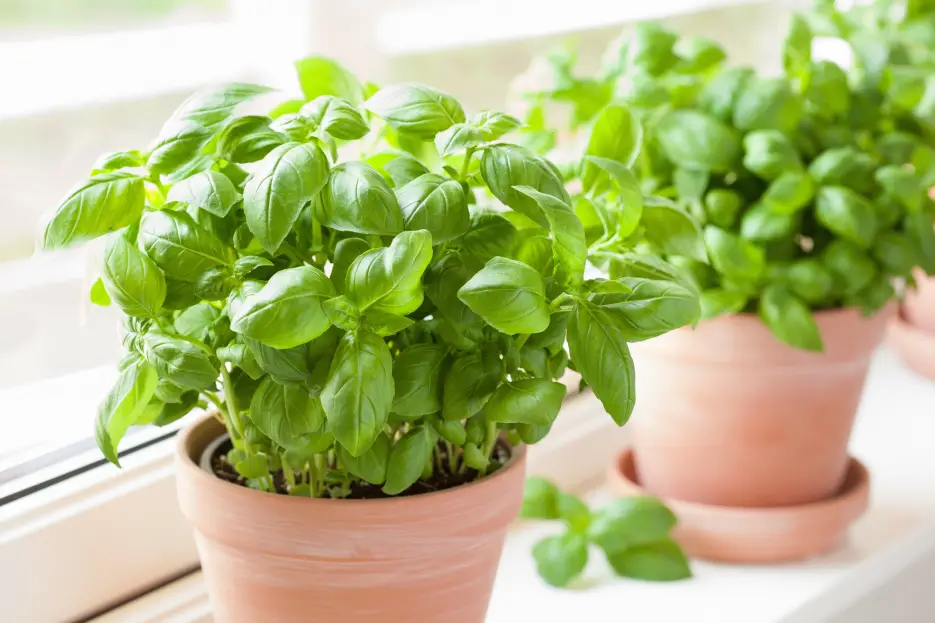
Basil is a versatile herb that not only enhances your cooking but also serves as one of the most effective Bee Repelling Plants. Its distinct aroma is pleasant to humans but acts as a natural deterrent for bees and wasps, making it an excellent dual-purpose plant for your garden.
Why It Works:
- Basil’s leaves release essential oils that contain natural insect-repelling compounds, which discourage bees and wasps from lingering nearby. These oils create an invisible barrier, making basil an excellent addition to outdoor seating areas, patios, and kitchen gardens.
How to Use It:
- Near Entry Points: Place potted basil near windows, doors, or patios to help keep insects out.
- Herb Garden Companion: Grow basil alongside other Bee Repelling Plants like mint and citronella for maximum effect.
- Outdoor Dining Protection: Keep basil on tabletops or around outdoor kitchens to deter bees and wasps while enjoying fresh air.
Additional Benefits:
- Basil thrives indoors and outdoors, making it a convenient year-round herb.
- Different basil varieties (such as sweet basil, Thai basil, and lemon basil) offer unique flavors for cooking.
- Beyond repelling bees and wasps, basil also helps keep mosquitoes and flies away.
By incorporating basil into your garden or patio setup, you can enjoy a functional and fragrant solution while taking advantage of one of the best Bee Repelling Plants for a more comfortable outdoor experience.
7. Cucumber Plants (Cucumis sativus)
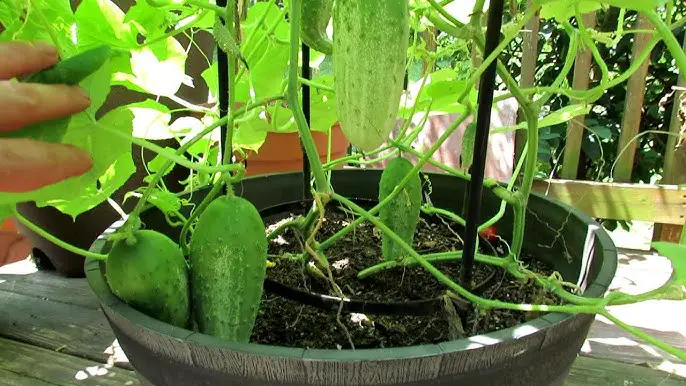
Surprisingly, even vegetable plants can serve as Bee Repelling Plants, and cucumber plants are an excellent example. Their vines not only provide fresh produce but also help deter bees and wasps naturally.
Why It Works:
- Cucumber skins contain a natural chemical compound that bees and wasps dislike. The bitterness of the peel creates a deterrent effect, keeping these insects from settling near the plant.
How to Use It:
- Vertical Gardening: Grow cucumber plants on trellises or supports to maximize space and protect seating areas from insect activity.
- Garden Borders: Plant cucumbers along the edges of vegetable beds to deter unwanted pollinators.
- Potted Growth: Use containers for easy placement near patios, balconies, or windowsills.
Additional Benefits:
- Provides homegrown cucumbers for salads, sandwiches, and refreshing summer dishes.
- Supports sustainable gardening by offering both pest control and food production.
- Can be paired with other Bee Repelling Plants like basil and mint for a multi-purpose garden setup.
By incorporating cucumber plants into your outdoor space, you get the best of both worlds—effective insect repellent properties and a fresh, homegrown harvest. It’s a win-win for gardeners looking to keep their environment comfortable and productive.
8. Clove (Syzygium aromaticum)

Clove is a powerful spice plant that doubles as an effective Bee Repelling Plant. Its strong, spicy aroma is pleasant to humans but acts as a natural deterrent for bees and wasps, making it a great addition to outdoor and indoor spaces.
Why It Works:
- Clove contains eugenol, a potent essential oil that disrupts the scent receptors of bees and wasps. Both the fresh plant and dried clove buds release a fragrance that insects find overwhelming, keeping them at bay.
How to Use It:
- Outdoor Planting: Grow clove trees in warm climates where they can thrive in full sun.
- Potted Protection: If growing the plant isn’t an option, place dried clove buds in small bowls or pots around seating areas.
- Essential Oil Repellent: Mix clove oil with water and spray it around doors, windows, and patios for additional insect-repelling benefits.
Additional Benefits:
- Dried clove buds are commonly used in cooking, teas, and baking.
- Clove’s aromatic properties make it a great ingredient for potpourri and homemade air fresheners.
- The plant has medicinal properties and is widely used in traditional remedies for pain relief and digestion.
By incorporating clove into your home or garden, you gain a fragrant, multi-purpose solution while benefiting from one of the best Bee Repelling Plants available.
Tips for Planting and Maintaining These Repellent Plants
To get the most out of your Bee Repelling Plants, follow these essential care and placement strategies:
1. Strategic Placement:
- Position plants in areas where bees and wasps tend to gather, such as patios, outdoor dining spaces, garden furniture, or near doorways and windows.
- Plant them around entry points to create a natural barrier that discourages insects from coming inside.
2. Companion Planting:
- Integrate Bee Repelling Plants with other flowers and herbs to maintain a well-balanced and visually appealing garden.
- Pair them with vegetables or fruit-bearing plants to naturally repel pests while maintaining biodiversity.
3. Regular Maintenance:
- Keep plants healthy by watering them appropriately, trimming dead leaves, and preventing overcrowding.
- Prune aromatic herbs like basil and mint regularly to release their essential oils and maximize their repelling effects.
4. Container Gardening:
- Use pots and containers for plants with aggressive growth habits, such as mint and citronella, to prevent them from taking over garden beds.
- Move potted plants around as needed to enhance protection in different areas of your home or yard.
5. Integration Indoors:
- Certain Bee Repelling Plants like mint, basil, and clove thrive indoors, making them perfect for kitchens, windowsills, and balconies.
- Dried herbs or essential oils from these plants can be placed in bowls or diffused around living spaces for additional insect protection.
By following these tips, you can effectively use Bee Repelling Plants to create a comfortable, pest-free environment both indoors and outdoors
Transform your outdoor space into a peaceful retreat by incorporating Bee Repelling Plants into your garden. These natural solutions create an eco-friendly barrier against bees and wasps while enhancing your landscape with lush greenery and vibrant blooms.
Whether you choose aromatic herbs, bold flowers, or textured shrubs, these plants offer more than just insect control—they add beauty, fragrance, and functionality to your home.
FAQs:
1. Do Bee Repelling Plants completely eliminate bees and wasps from my garden?
No, Bee Repelling Plants help reduce bee and wasp activity but won’t eliminate them entirely. These plants emit strong scents or contain natural compounds that make your space less attractive to these insects, encouraging them to stay away. For best results, use multiple repelling plants strategically around seating areas, entry points, and patios.
2. Can I grow Bee Repelling Plants indoors?
Yes! Many Bee Repelling Plants, such as mint, basil, and clove, thrive indoors in pots or containers. Placing them near windows, balconies, or doorways can help deter bees and wasps from entering your home while adding a fresh, green touch to your indoor space.
3. Will planting these plants harm pollinators or other beneficial insects?
No, these plants don’t harm pollinators—they simply discourage bees and wasps from lingering in certain areas. If you want to maintain a balanced ecosystem, consider planting Bee Repelling Plants in spaces where you want fewer insects (like patios or doorways) while keeping pollinator-friendly flowers in other areas of your garden.
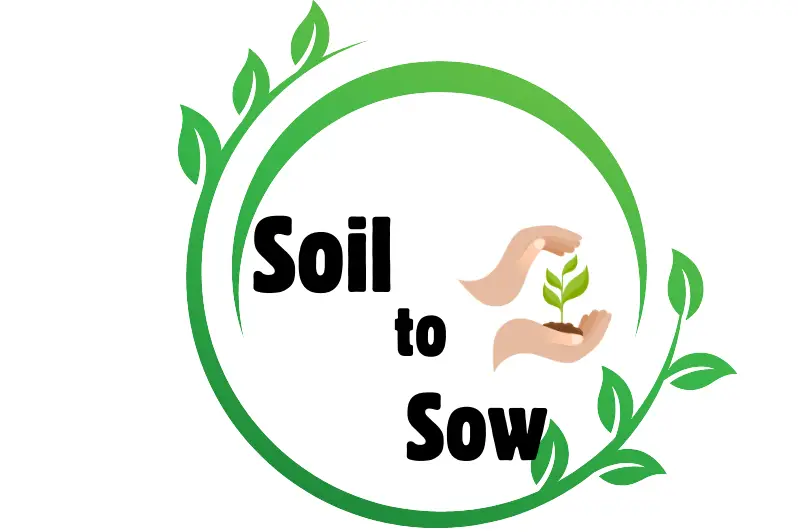
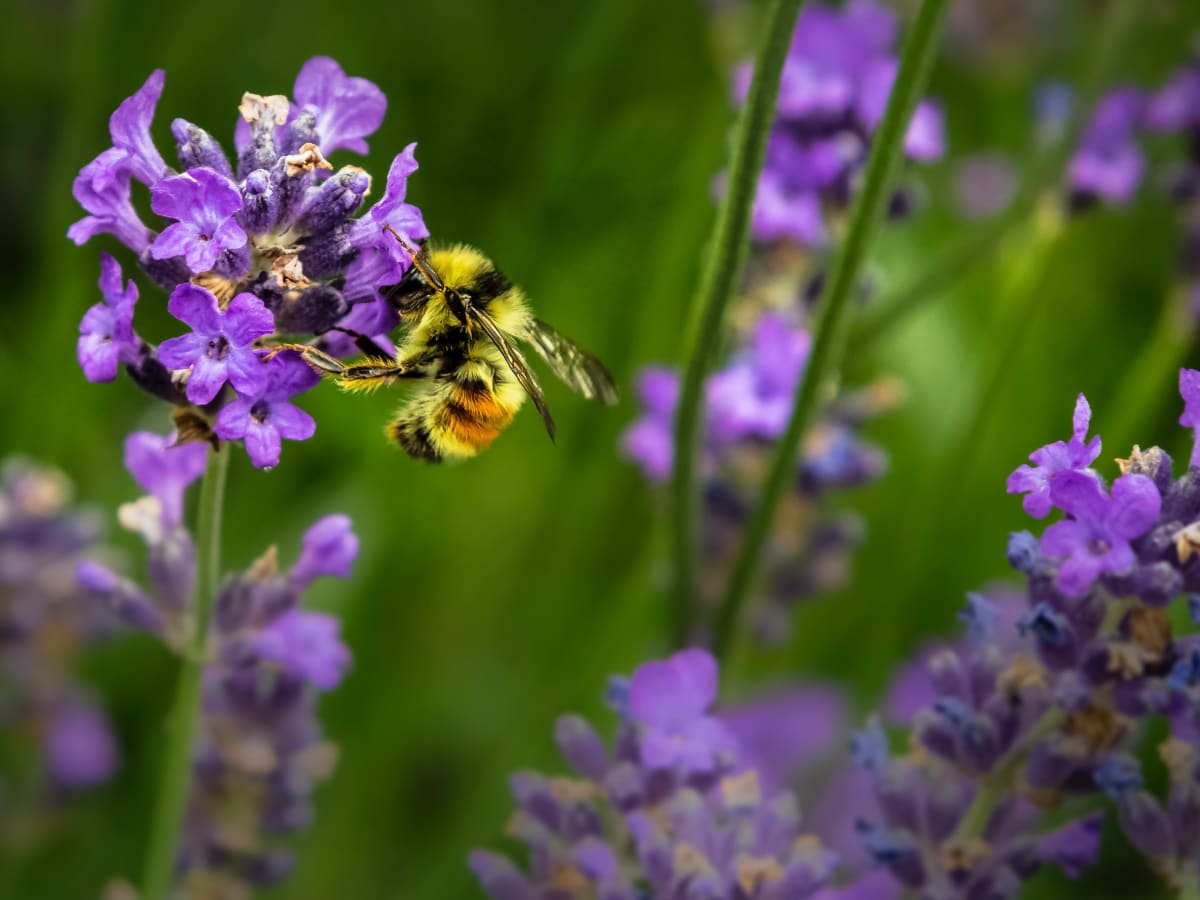
2 thoughts on “Plants That Repel Bees And Wasps: Beautiful Yet Bee-Free!”